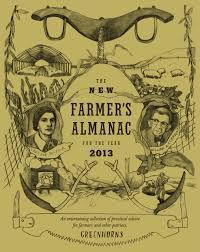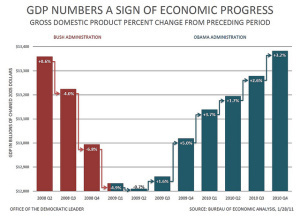Stuart Jeanne Bramhall's Blog: The Most Revolutionary Act , page 1376
December 10, 2013
A Warning on the Bitcoin Bubble
A Bitcoin is a type of alternative, computer-based currency known as a cryptocurrency because it uses cryptography (i.e. specialized digital security technology) to make it difficult to counterfeit. Up until a few months ago, interest in Bitcoins was limited to computer nerds seeking to opt out of the bankster-controlled monetary system. In the last few months, Bitcoins have become a hot investment as the value of a Bitcoin has shot up from $43 (when I first blogged on Bitcoins back in March) to over a thousand dollars. The value of a Bitcoin peaked at $1,200 on Dec 4. It has since dropped to $917.10
Below are three short videos presenting differing perspectives on Bitcoins.
The first is by Bill Still, the filmmaker who produced Money Masters and The Secrets of Oz. According to Still, the main reason the value of Bitcoins has gone through the roof is because China is investing its trade surplus in Bitcoins and other cryptocurrencies rather than dollars. Back in November China announced it would cap future purchases of US dollars and treasury notes. At present, China owns $1.3 trillion of US debt.
Prior to April 2013, China was using a substantial proportion of their trade surplus to purchase gold. However after Chinese State TV aired a documentary on Bitcoins in April, the Chinese have been really bullish on Bitcoins. The video is in Chinese. To view English subtitles click on the YouTube icon to view in YouTube. The subtitle icon is fourth to the right at the bottom of the screen.
Still is obviously really bullish on cryptocurrencies, particularly the quark. In contrast the following video by Storm Clouds Gathering warns that the Bitcoins is in the throes of a speculative bubble. It also has a basic design flaw that will eventually squeeze small Bitcoin traders out of the market.
The design flaw? To enter into any transaction involving Bitcoins, a client is required to download a block chain consisting of every single Bitcoin transaction ever made. With the surge of interest in Bitcoins in the past two months, the size of the block chain reached 11 gigabytes in November. It’s expected to reach 250 gigabytes in two years. Eventually it will reach a terabyte, and small users will be totally shut out unless the system is totally restructured. At some point, it will most likely be centralized in super nodes requiring massive industrial sized servers. These super nodes will essentially function as banks, totally defeating the purpose of starting a decentralized currency.


December 8, 2013
A Rebel Comes of Age
Prologue (excerpt)
Ange’s skin crawled as Phillip placed the M16 in her arms. The gun was cold and unnaturally smooth. It smelled like burnt rubber. Then he left her alone with PJ, a tall, thin, forty-something with wavy, shoulder length black hair and a long, unkempt beard. The small unheated barn, with its dirt floor, was virtually empty except for a large utility table covered in scratches and stains. PJ had a laptop plugged into a socket that hung from the ceiling on a cord. He played her a video of a young woman disassembling an M16A2. The woman, who was white, had dark brown hair and wore a plain white tee shirt. Two men in uniform shirts stood on either side timing her. She looked up at them triumphantly as she set the last part on the table.
PJ was dressed in faded overalls fastened over a bulky gray cardigan and two sweatshirts. Ange could see them at the collar line—one gray and one dark blue.
“You see that?” He dragged out his vowels with a singsong intonation. Lacey said he was from Appalachia. “Two minutes ten seconds.”
He clicked replay and they watched the video again. Then he closed the laptop, shoved it aside, and replaced it with a glossy black and white poster depicting the M16 parts in the order they were to be removed.
“Okay. You do it now.”
Copying the woman in the video, Ange turned the weapon over to find the safety. Then removing the magazine to check the chamber, she removed the bolt carrier group. Laying the receiver and charging handle on the table, she broke the BCG down by removing the bolt retaining cotter pin, bolt and firing pin.
“Well done. Now reassemble it.”
She repeated the entire process three times. Then Phillip returned with a pair of ear protectors and safety glasses and took her to the firing area. A mixed race Haitian, he was slightly taller than PJ. He wore his hair in long dreadlocks, and Ange guessed he was somewhere in his early forties. Phillip’s face was long and narrow with deeply set eyes, a large hooked nose, thin lips, a sparse, untrimmed beard, and permanent creases on his forehead and around his eyes. Like many of Ange’s activist friends, he dressed in an assortment of free and secondhand clothes. Today he was wearing dark blue track pants, a mangy leather jacket that looked like it had been through the washing machine, and a woolen maroon cap that covered his forehead and ears.
Ange had hoped that PJ would take her for target practice. She didn’t like or trust Phillip. He didn’t seem to like teenagers very much. His desire to work with them puzzled her. She strongly sensed he had some ulterior agenda that had nothing to do with empowering the homeless youth of Bedford-Stuyvesant. She was also convinced it was his idea—not Fabio’s—that they use weapons to defend themselves against the impending eviction.
Occupy Homes, like Occupy Wall Street and other left-leaning movements, had always opted for nonviolent methods in confronting the police. Although Bank of America had yet to acknowledge the teenagers had taken over the abandoned Credit Union building, everyone knew it was only a matter of time before the bank obtained an eviction order.
Recruiting and training teenagers to shoot automatic weapons wasn’t normal, no matter how radical you were. Lacey said that military-style assault rifles were illegal in New York State, that PJ most likely belonged to some right wing militia. She gave no clue—and Ange didn’t ask—how she knew these things. Ange assumed the ex-boyfriend who taught Lacey to shoot was the source of information.
Lacey and Geneva were already outside in the firing area. They lay side by side aiming at multicolored concentric circles attached to straw bales. Phillip directed Ange to lie down next to them. Gritting her teeth, Ange did as she was told, determined to block out the churning nausea in her gut with sheer force of will. The sooner she learned to do this, the sooner she could end the firearms lessons and this whole sordid chapter of her life.
A Rebel Comes of Age can be pre-ordered from the following links:
Kobo: A Rebel Comes of Age
Apple ibooks (iTunes): A Rebel Comes of Age
Nook Book: A Rebel Comes of Age
Kindle edition available after Dec 15
Cover photo credit: sand_and_sky via photopin cc


December 6, 2013
Talk About Testicularity
Guardian editor Alan Rusbridger testifying in front of the British Home Affairs Committee about his decision to publish Edward Snowden’s leaked NSA files. When one member accuses him of committing a criminal offense, Rusbridger makes utter mincemeat out of him:
Here is a partial transcript of the testimony published in the December 3 Guardian
[starts at 22:00 minutes on the tape]
Conservative MP Michael Ellis: Mr Rusbridger, you authorised files stolen by [National Security Agency contractor Edward] Snowden which contained the names of intelligence staff to be communicated elsewhere. Yes or no?
Rusbridger: Well I think I’ve already dealt with that.
Ellis: Well if you could just answer the question.
Rusbridger: I think it’s been known for six months that these documents contained names and that I shared them with the New York Times.
Ellis: Do you accept that that is a criminal offence under section 58A of the Terrorism Act, 2000?
Rusbridger: You may be a lawyer, Mr Ellis, I’m not.
Ellis: Now 58,000 documents were sent or communicated by you – as editor-in-chief of the Guardian you caused them to be communicated, and they contained a wealth of information. It was effectively an IT-sharing platform between the United States and the United Kingdom intelligence services wasn’t it?
Rusbridger: I’ll leave you to express those words.
Ellis: So you decline to answer that. Very well. But that was information which contained a wealth of data, protected data, that was both secret and even top secret under the protective classifications of this country.
Rusbridger: They were secret documents.
Ellis: Secret and top-secret documents. And do you accept that the information contained personal information that could lead to the identity even of the sexual orientation of persons working within GCHQ?
Rusbridger: The sexual orientation thing is completely new to me. If you could explain how we’ve done that then I’d be most interested.
Ellis: In part, from your own newspaper on 2 August, which is still available online, because you refer to the fact that GCHQ has its own Pride group for staff and I suggest to you that the data contained within the 58,000 documents also contained data that allowed your newspaper to report that information. It is therefore information now that is not any longer protected under the laws and that jeopardises those individuals, does it not?
Rusbridger: You’ve completely lost me Mr Ellis. There are gay members of GCHQ, is that a surprise?
Ellis: It’s not amusing Mr Rusbridger. They shouldn’t be outed by you and your newspaper.
[Brief inaudible exchange in which both men are talking]
Rusbridger: The notion of the existence of a Pride group within GCHQ, actually if you go to the Stonewall website you can find the same information there. I fail to see how that outs a single member of GCHQ.
Ellis: You said it was news to you, so you know about the Stonewall website, so it’s not news to you. It was in your newspaper. What about the fact that GCHQ organised trips to Disneyland in Paris, that’s also been printed in your newspaper, does that mean if you knew that, information including the family details of members of GCHQ is also within the 58,000 documents – the security of which you have seriously jeopardised?
Rusbridger: Again, your references are lost to me. The fact that there was a family outing from GCHQ to Disneyland [CUT OFF]
I know I promised to post an excerpt from my new novel A Rebel Comes of Age, but this was too good and I couldn’t resist.


December 4, 2013
An Occupy Wall Street Novel
My new novel, A Rebel Comes of Age, is scheduled for release (as a $3.99 ebook) on December 21, 2013.
It’s a sequel to my first young adult novel, The Battle for Tomorrow. In the first book, sixteen-year-old Angela Jones is arrested and sent to juvenile hall for participating in a blockade and occupation of the US Capitol. The sequel takes place a year later, when she and four homeless teenagers occupy an empty commercial building owned by Bank of America. Their goal: to transform it into a teen homeless shelter.
Over the next five months, they work through all the typical problems of inner city teenagers – including raging hormones, the temptation of drugs and alcohol, racial tensions, and pregnancy – as they struggle to win community acceptance. When Bank of America obtains a court order evicting them, the adventure turns deadly serious as they realize lives are on the line. When the other residents decide to use automatic weapons to keep the police SWAT team out, Ange experiences a major personal crisis and is forced to re-examine her attitudes towards guns and violence.
The Lost Generation – Life After Work
A Rebel Comes of Age explores the question of life after work. In the five years since the 2008 economic meltdown, 25-40% of 18-30 year olds still find themselves permanently excluded from the workforce. What we are looking at, in essence, is an entire generation sidelined to the fringes of society. Despite all the government and media hype, the capitalist economic system is incapable of creating jobs for them.
We are all conditioned to believe that life without full time work is unlivable. I seriously question the validity of this viewpoint. As a species, human beings occupied the planet quite happily for 250,000 years without selling their labor to a wealthy elite. Two centuries ago, the concept of waged work was virtually unknown, and most of the world’s current seven billion inhabitants are officially classified as “unemployed.”
With more equitable distribution of economic resources, freeing people from the drudgery of work opens up infinite possibilities for more creative and socially productive activities. Some analysts attribute the Arab Spring and Occupy Wall Street to unemployed youth taking up social and political activism as an alternative to work.
A Rebel Comes of Age provides a brief snapshot of a group of homeless, unemployed teenagers who find themselves building a movement, without quite realizing this is what they are doing.
My next post will feature an excerpt from Chapter 1.
***
A Rebel Comes of Age can be pre-ordered from the following links:
Kobo: A Rebel Comes of Age
Apple ibooks (iTunes): A Rebel Comes of Age
Nook Book: A Rebel Comes of Age
Kindle edition available after Dec 15
Cover photo credit: sand_and_sky via photopin cc


December 2, 2013
A Little Guy Sticks It to Apple and Jamie Dimon
Tim Cook Apple CEO
A New Brand of Shareholder Activism
It’s fairly common knowledge that shareholders have little say in corporate governance. For the most part upper level managers run their companies as their own personal fiefdom. In addition to paying themselves obscene salaries, they make decisions that mainly benefit management, often at the expense of employees, shareholders, and the community that hosts them.
Shareholder activism, also known as shareholder advocacy, has resulted in over 400 shareholder resolutions in 2013 on issues as wide ranging as carbon footprint, fracking, and CEO reimbursement. While holding great promise for the future, the movement has yet to have major impact on the way CEOs operate their companies.
Enter A Meanss
Imagine you, as a stockholder, file a multimillion dollar judgment against Apple. They refuse to pay up, and you get a court order to confiscate merchandise from their computer stores. After obtaining a similar settlement against Jammie Dimon, CEO of JP Morgan Chase, you begin seizing the assets of your nearest Chase Bank.
Although much of the story A Meanss tells on his blog (A Meanns to an End) sounds far-fetched, the level of legal and financial detail lends it a ring of plausibility. If Meanns invented all this, he sure has one hell of an imagination.
Meanns Wins Multimillion Dollar Settlement
Although Meanss, who is under gag order, doesn’t say so directly, his blog suggests the lawsuit he filed against the federal government in 2009 related to malicious harassment (stalking, mail interference, phone surveillance, etc.) by an unnamed federal agency. The settlement was paid into an investment account which couldn’t be drawn as cash or into a private bank account. Instead, for some reason, it could only be invested in stocks or real estate.
The couple ultimately used most of the fund to purchase shares in Apple and Ford. They also transferred $1.4 million to an escrow account managed by JP Morgan Chase to buy a house. When the home purchase fell through, they sought to withdraw the $1.4 million and JP Morgan Chase refused to release it.
Meanwhile Apple and Ford failed to pay quarterly dividends Meanss was due. Neither company offered any explanation. They merely refused to respond to queries from either Meanss or his attorneys. Meanns blames his failure to receive the funds he was owed on ongoing government harassment. He claims to have an email the unnamed government agency sent JP Morgan Chase warning them not to release his funds for reasons of national security.
Meanss Obtains Court Order
After an extensive legal battle, Meanns ultimately obtained a court order requiring JP Morgan Chase to release the $1.4 million. They also obtained court orders requiring Apple front up with $12.6 million in unpaid dividends and Ford $600,000. In September, Apple was given 30 days to begin payments according to the schedule the judge set up.
Meanss Begins Confiscating Merchandise
When Apple failed to comply, Meanns applied for and was granted a seizure of assets order. On October 11, federal marshals assisted him in executing the order on the Apple store in Keystone Crossing Indianapolis. In total he confiscated $275,000 worth of merchandise. On October 19th marshals arrested three retail staff at the Columbus Apple store when they tried to interfere with a seizure of assets order that netted Meanss $2.75 million of computer equipment. In early November, marshals assisted him in carrying out seizure of assets orders in two Apple stores in Louisville Kentucky, in which acquired $3.7 million worth of electronic equipment.
Meanwhile on October 31, Meanns started in on JP Morgan Chase with a seizure of assets order at the Chase Bank in Indianapolis. Everything in the bank was seized except for the server and records containing customer information. The process also netted him approximately $126,000 in cash in addition to rolls of coins.
Is Meanss’ Story Believable?
Obviously there are details missing from this story that would be useful in evaluating its believability. Meanns claims a gag order issued with the settlement prevents him from disclosing factual details. Even so, it would be useful to know his occupation and the circumstances that caused him to become the focus of government harassment.
Overall I find the pattern of harassment he describes quite similar to the experiences of federal and corporate whistleblowers I worked with when I had a private practice in Seattle. They, too, experienced stalking, break-ins, mail interference, phone surveillance, prank calls, etc. when they tried to publicize sensitive information powerful people wanted to keep hidden. I also worked with activists whose political views caused them to be subjected to malicious harassment. It was my own involvement with two former Black Panthers that led to the federal harassment I describe in my memoir The Most Revolutionary Act: Memoir of an American Refugee.
The intersection between government and corporate interests is also a common scenario that’s carefully hidden from public view.
This is the only instance I know of in which a target successfully sued the government for harassment. It’s more typical for the government to arrange car and plane accidents for whistleblowers who become too troublesome – like they did journalist Michael Hastings.
photo credit: deerkoski via photopin


November 30, 2013
Sign Petition to INCREASE Social Security

New bills by Senator Mark Begich (D-Alaska) and Tom Harkin (D-Iowa) seek to let the steam out of the phony debate over Social Security’s non-existent fiscal crisis by removing the $113,700 cap on earnings that are taxable for Social Security purposes.
Under Begich’s and Harkin’s proposals, there would cease to be a $113,700 maximum on the earnings taxed for Social Security purposes. Instead, all US workers would be charged 12.4% (with employer and employee each paying 6.2%) on their full earnings. Eliminating this $113,700 cap is clearly fairer than our current system.
There is no reason CEOs making millions of dollars a year shouldn’t pay 12.4% on their full income, just like the rest of us. At the same time, the additional revenue is more than enough to keep the Social Security Trust Fund solvent into the next century. Both proposals also significantly increase cost-of-living adjustments to accurately reflect the higher cost inflation seniors face compared to the general public.
It has become virtually impossible for most Americans to find their way through the smoke and mirrors surrounding recent proposals to balance the federal budget by slashing Social Security benefits. The entire Social Security debate is an exercise in deception. Nothing exemplifies more clearly that most lawmakers, irrespective of political party, see their primary purpose as deceiving and manipulating the American public.
What we’re not being told is that most Washington lawmakers (with a few notable exceptions) are in the pocket of powerful Wall Street banks who seek to privatize Social Security for its profit potential. As anyone with small business or payroll experience can tell you, cutting Social Security benefits can’t possibly reduce the federal deficit because they are paid from a totally separate, self-funded Social Security Trust Fund. Moreover, a close look at the Fund’s balance sheet reveals that it’s on track to remain solvent until 2033 – even if nothing is done.
Tell the Senate to support the Harkin and Begich proposals to scrap the cap on Social Security payroll tax. Sign the petition.
photo credit: Fifth World Art via photopin cc


November 28, 2013
A Novel About Climate Change
Flight Behavior
By Barbara Kingsolver
Book Review
Flight Behavior is actually about culture clash and the psychology of belief systems. In it, Kingsolver examines the manner in which social conditioning affects peoples’ reaction to a highly abstract concept such as climate change.
The book concerns a navigational error in which the entire North American population of Monarch butterflies mistakenly migrates to a mountain in Appalachia to hibernate. Tension immediately arises when the climate scientist sent to investigate is a black man from the Caribbean and the family that owns the property seeks to log it to dig their way out of debt. The rest of the community, with a world view based on conservative talk radio and the wisdom of their fundamentalist minister, is deeply skeptical of all outsiders and intellectuals – especially those who suggest anything is more important than putting a roof over their heads and food on the table. The tension is resolved somewhat when the family discovers eco-tourism and starts charging visitors to view the spectacular congregation of butterflies.
Kingsolver carefully interweaves an elegant subplot about a decision by the main character to accept paid work with the climate scientist and his student assistants. The move awakens an intellectual side of Dellarobia that had gotten lost in the overwhelming drudgery of caretaking her husband and three young children.
The author wisely refrains from taking a stand on the scientific merits of the climate change debate. She merely observes the reaction in a small Appalachian community when changing weather patterns hit them in a way they can’t ignore. Kingsolver is a master of character development and keeps you turning pages to see what her characters will get up to next.


November 26, 2013
The New Farmer’s Almanac
The New Farmer’s Almanac for the Year 2013
Published by the Greenhorns
Book Review
The Greenhorns, which publishes the 2013 New Farmer’s Almanac, is a national organization founded in 2007 to support thousands of young farmer’s who are leaving US cities to start small scale organic farms. An economically precarious occupation, farming is subject to numerous forces over which the farmer has no control. Among others, these include land speculation, unfavorable weather, and constant downward pressure on crop prices. The New Farmer’s Almanac is modeled on the annual Old Farmer’s Almanac, which dates back to revolutionary times. However the new almanac differs in its focus on the myriad of networks and resources which have grown up around the food localization movement. Food localization is the name given to a growing international initiative to improve improve health and reduce environmental harm by switching from imported and chemically-laden processed foods to fresh, locally grown organic products.
The Old Farmer’s Almanac
Historically the purpose of almanacs has been to provide farmers with working information about the earth’s natural cycles and the art and business of agriculture. The Old Farmer’s Almanac dates back to Ben Franklin’s Poor Richard’s Almanac, an annual publication he launched in 1732 under the name Richard Saunders. Franklin’s wasn’t the first and it clearly drew on earlier English and North American almanacs. In pioneer days, the farmer’s almanac was the only reading material in the household other than the Bibl and was expected to provide a year’s worth of entertainment.
Like the Old Farmer’s Almanac, the New Farmer’s Almanac offers long range weather forecasts, full moon dates, sunrise and sunset times, best planting dates, crop advice, tides tables, riddles, games, recipes, songs, and folk wisdom. It also includes intriguing reprints of essays, proverbs, and classified ads from historic almanacs
The Farm Utopia Movement
I found the introduction, which describes America’s farm utopia movement, the most interesting secion. Throughout US history, Idealist groups have left the city to set up small scale rural farms in their desire to escape the evils of mercantilist society. Examples include the Shakers in 1780, the Mormon start-up in 1817, the Transcendentalists at Fruitlands in 1840, the Free Love Christian Movement in Oneida in 1858, and Chautauqua, the righteous rural education scheme, in 1874. The sixties also saw a large back-to-the land movement as part of the hippy subculture.
The New Farmer’s Almanac also contains numerous informational articles on traditional farming skills, such as animal husbandry (cows, sheep, horses, and fowl), pasture design, beekeeping, worm farming, invasive plants, frost management, fermented foods, cheese making, and preparing oil infusions, tinctures, and salves from herbs. One essay is a discussion of the moon planting schedules practiced in Maori and other indigenous societies. These were popularized by Rudolf Steiner (founder of the Waldorf school movement) in the 1920s. The inclusion of full moon dates in every Old Farmer’s Almanac suggests that early New World farmers also planted according to phases of the moon. The modern biointensive farming movement continues to employ moon planting schedules.
Food Policy Councils
The remainder of the book discusses the history of historic farmer activism, through the 20th century Grange and populist movements, and the modern young farmer and food localization movement. I was most impressed by the essay on the Food Policy Council Movement. Amazingly, as of May 2012 there were 193 Food Policy Councils, involving over45 communities and 3,500 participants. Their purpose: to provide communities a say in where there food comes from and how it’s produced. There are also features on the history of the organic movement (which started back in 1911), as well as reading lists and links to material on apprenticeships and agriculture education, business and finance issues, legal advice, sustainable farming techniques, and Community Supported Agriculture schemes (CSAs). Forming a CSA enables a local community to support local small-scale farmers with upfront costs.
If We Die, You Go With Us

photo credit: jelene via photopin cc
Unlike the Old Farmer’s Almanac, the New Farmer’s Almanac is clearly aimed at a broader audience than farmers. Given growing public concern with food security issues such as chemical and bacterial contamination and the endangered bee population, it’s an engaging read for people who produce or consume food. In other words, all of us.


November 21, 2013
The Power of Community
The Power of Community
Produced by The Community Solution (2006)
Film Review
The Power of Community is a documentary about Cuba’s “Special Period” in the early 1990s, following the political and economic collapse of the Soviet Union. The break-up of the USSR resulted in the virtual collapse of the Cuban’s economy owing to Castro’s dependence on Soviet oil. Not only did Cuba lose 80% of their oil imports, they also lost most of their food import when Bush senior enacted a trade embargo that penalized countries that raded with Cuba.
In contrast to the response of the industrialized world to the 2008 global meltdown, Cuba didn’t respond to the economic crisis by enacting austerity cuts. Instead they added free food to existing social services, which include free health care and and tertiary education. By implementing food rationing to prevent hoarding and speculation, successfully provided the entire population with 80% of their monthly food requirement.
Important Lessons for the Industrialized World
The filmmakers believe Cuba’s resilience in weathering the collapse of their fossil fuel economy offers important lessons for the developed world as they confront dwindling fossil fuel resources. The Power of Community begins by explaining Peak Oil and oil engineer M.K. Hubbert’s prediction that oil, gas, and coal resources would cease to be abundant and plentiful in the 21st century. It goes on to describe the effect of the loss of cheap energy and food during the Special Period.Between 1992-94, the average Cuban lost 20 pounds and pregnant women and children under five began showing signs of malnutrition.
The most immediate response was from the Cuban people themselves, as city dwellers reclaimed every available patch of vacant land. The government, in turn, began offering rent and tax-free tenancy on government land to individuals and cooperatives willing to produce food. To compensate for the loss tractors and fossil-fuel based fertilizers, pesticides, and herbicides, Castro government also engaged Australian permaculture specialists to organize extensive country-wide training in organic farming techniques.
Transformation on a Massive Scale
Recovery of essential soil microorganisms killed by industrial pesticides takes approximately 3-5 years. During this transition period, the entire Cuban society underwent transformation, as cars, busses, and tractors were replaced with a million Chinese bicycles, horses, mules, oxen and human laborers. As farmers’ incomes rose, there was also a major population shift from cities to the countryside. A side benefit was the drop in diabetes and cardiovascular disease as Cubans began exercising more and increased their dietary intake of fresh vegetables.
To maintain their electrical grid, Cuba revamped their power plants to burn their low quality domestic crude oil and converted their sugar refineries to biomass power plants. In the 5% of the country that remains off grid, wind energy, hydropower, and solar photo voltaic cells supply power to schools, clinics and hospitals.
Intangible Benefits of Cuba’s Organic Revolution
The Cubans interviewed in The Power of Community view the transition as enormously positive. The close cooperation required to meet basic survival needs has reinvigorated old community ties that were destroyed by industrialization. They are also proud of the new political independence food and energy self-sufficiency has brought.
photo credit: cheeses via photopin cc


November 19, 2013
The Fallacy of Unlimited Growth
An increasing number of environmentalists and economists make the argument that unlimited economic growth is impossible on a finite planet. More importantly, there are clear links between rampant growth and worsening human health and well-being (through toxic pollution and extreme weather events).
In the following interview, Andrew Simms, author of Cancel the Apocalypse, makes an extremely articulate case for transitioning to a steady state economy. The main argument for a growth-based economy is to lift poor people out of poverty. However, as Simms points out, exponential economic growth only worsens income inequality.
I find it intriguing that David Cameron called for limits to growth while in opposition. Since being elected Britain’s prime minister, he has totally reversed himself.
photo credit: Leader Nancy Pelosi via photopin cc


The Most Revolutionary Act
- Stuart Jeanne Bramhall's profile
- 11 followers









